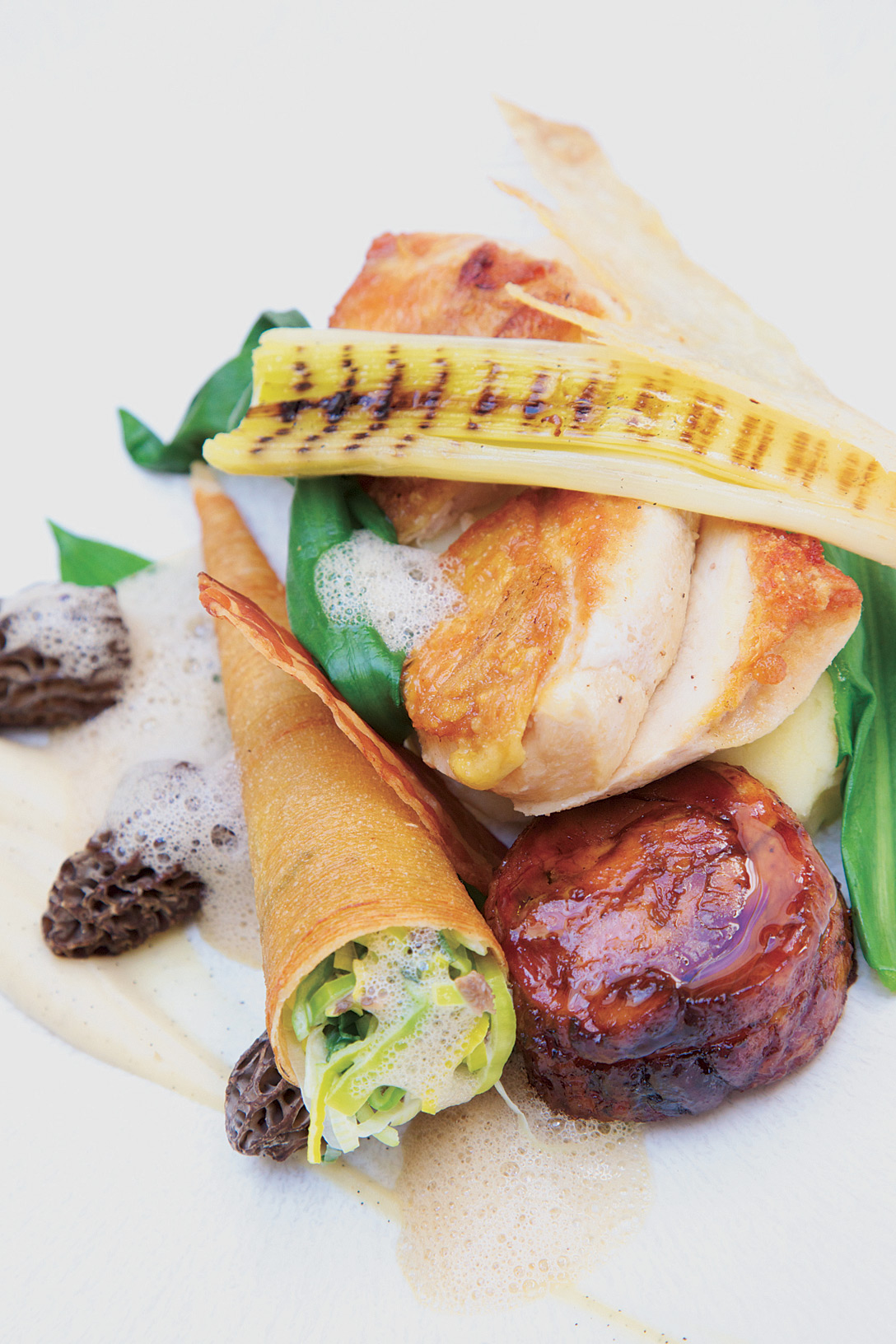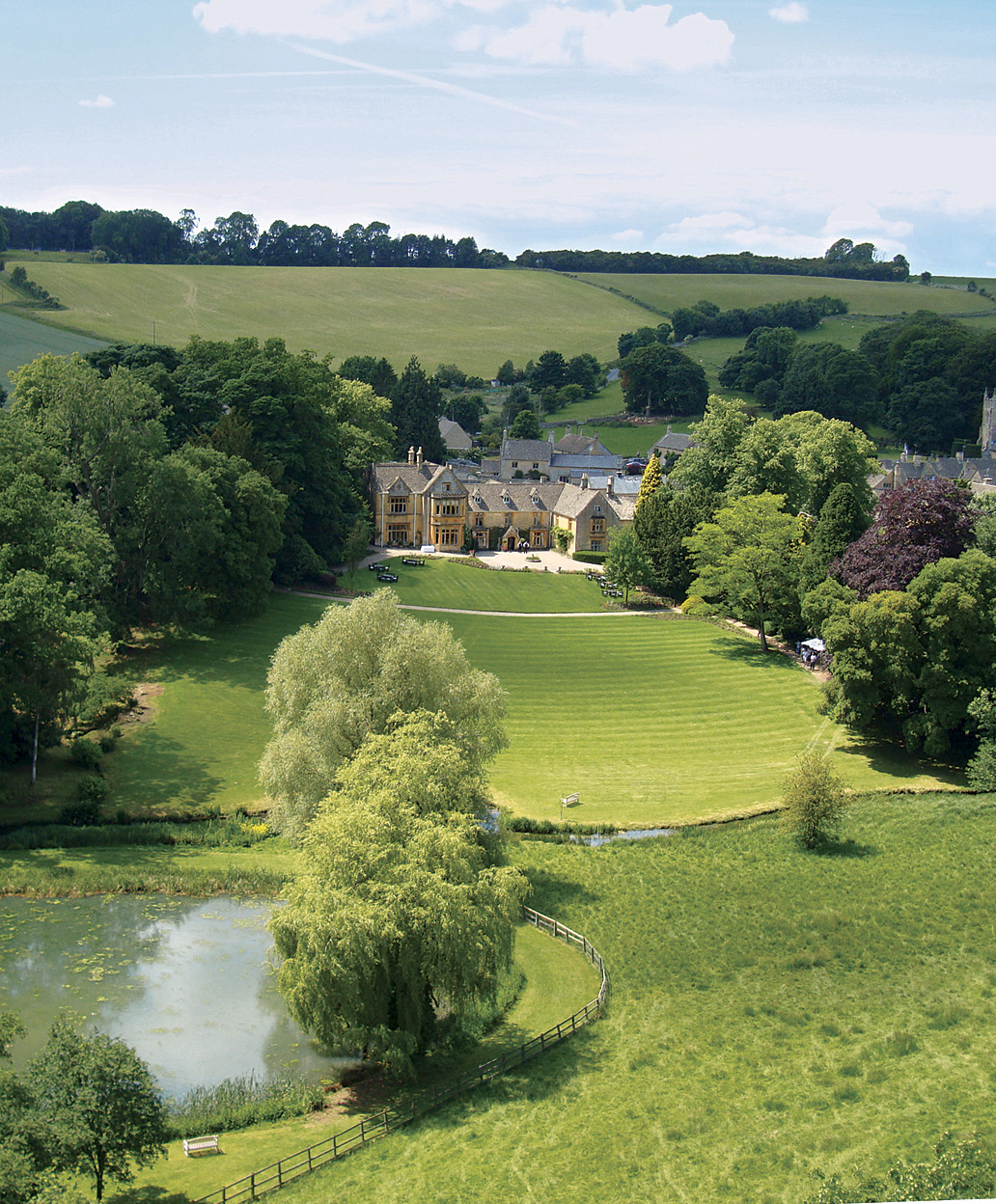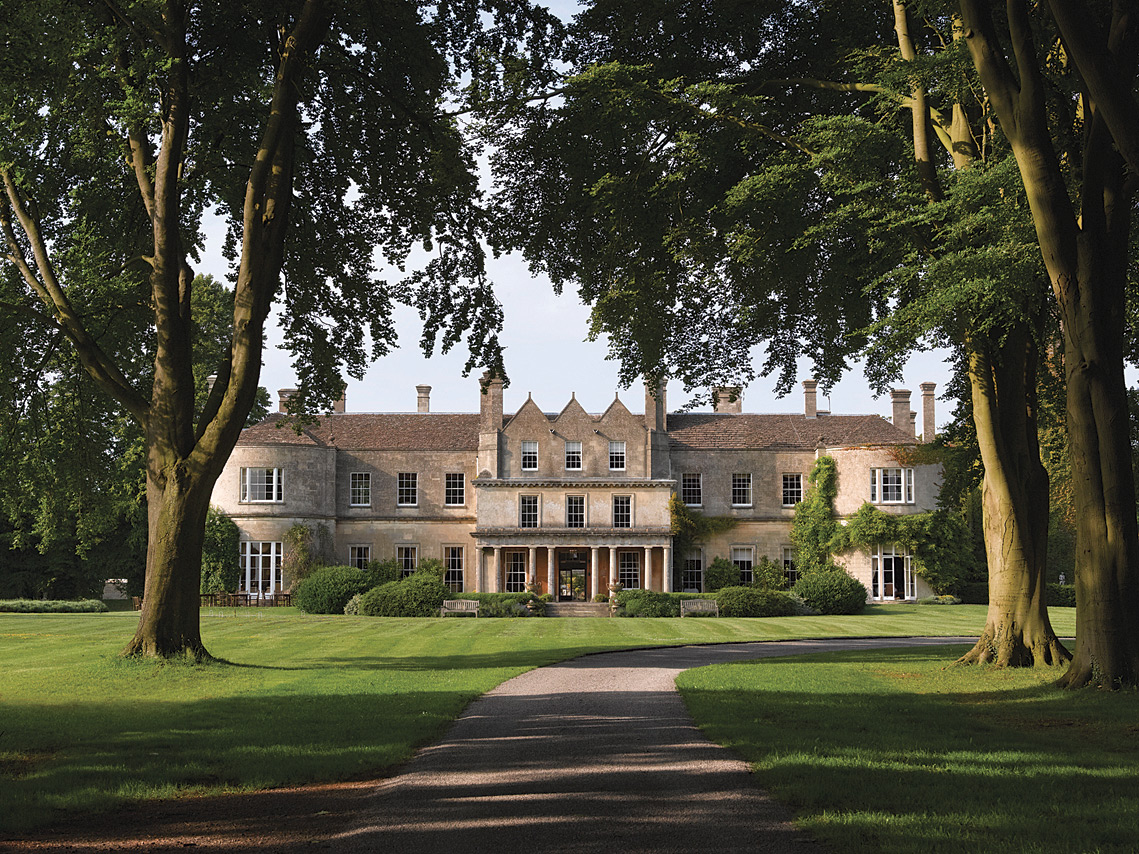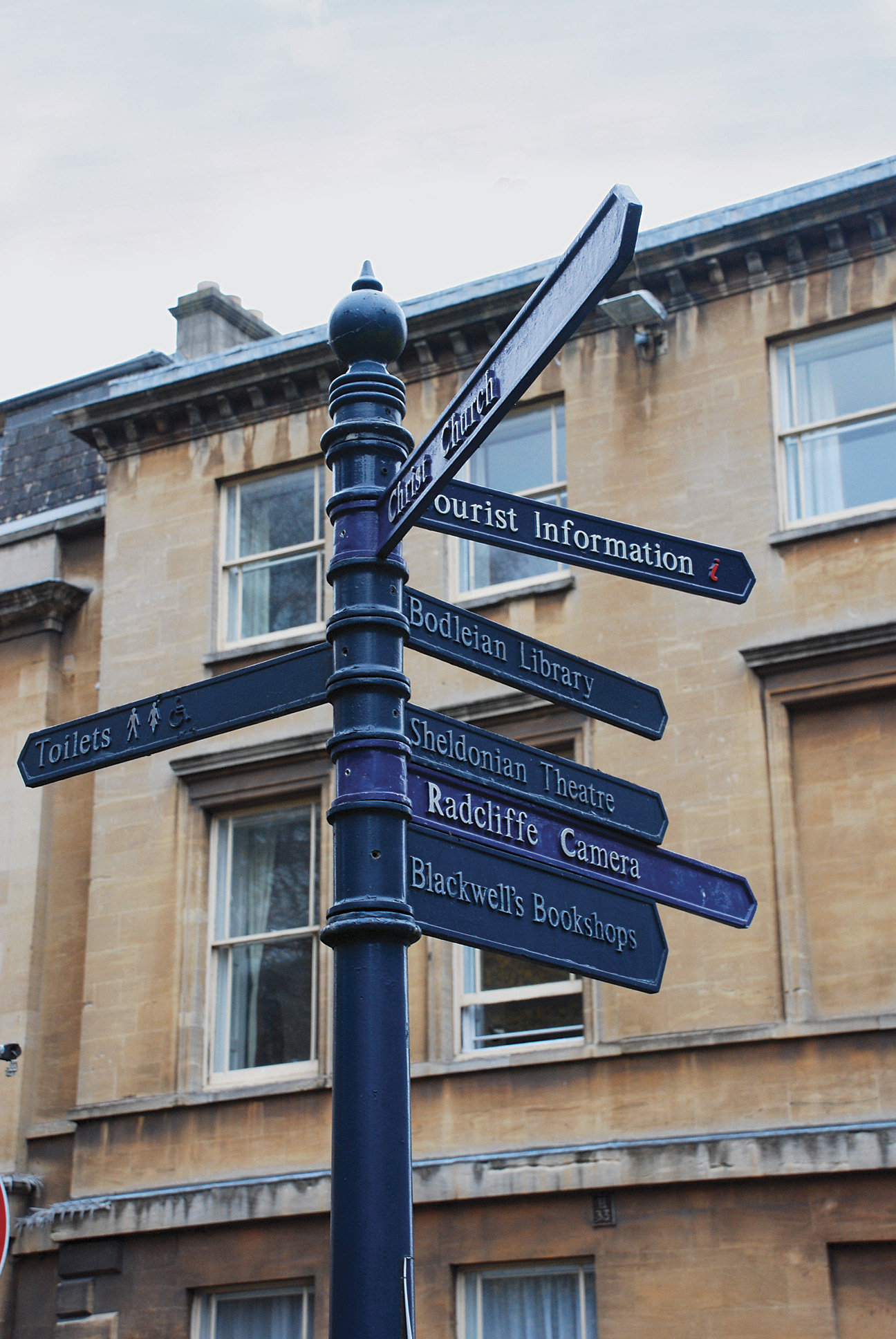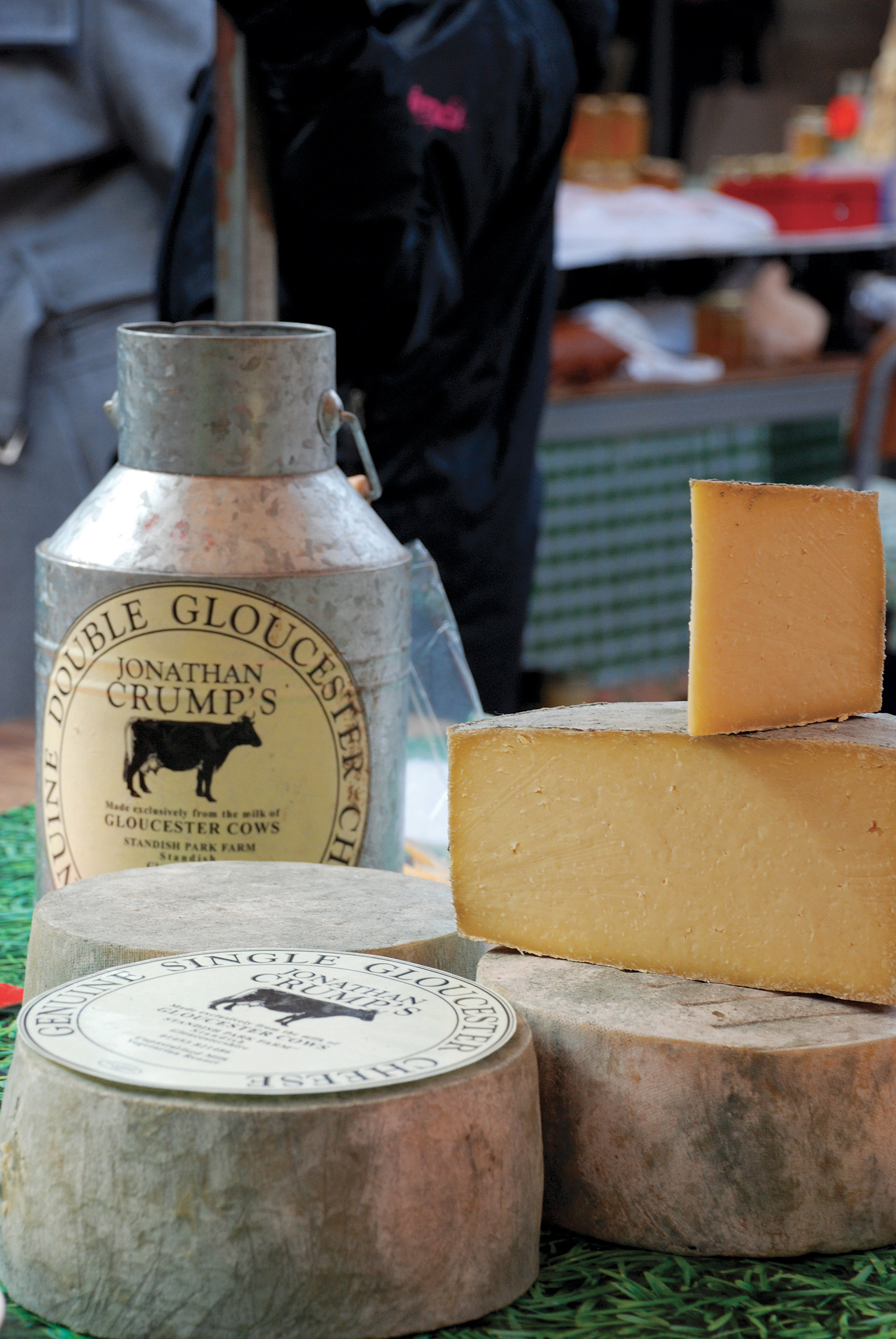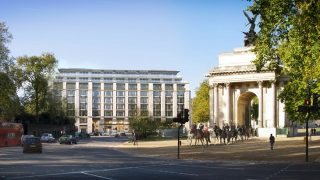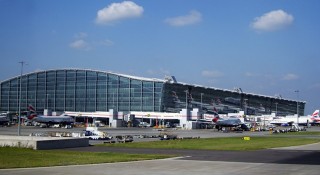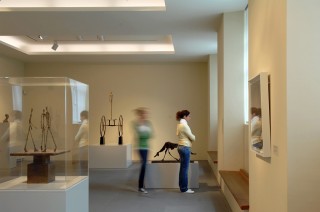Dispatches / Road Trip—England
Crossing the Cotswolds
Steeped in history, this bucolic, easy-to-drive region of southwestern England is equally appealing for its modern-day comforts and cuisine.
I am sitting in the undercroft of a 14th- century church, beneath one of the most valuable collections of books in the world. St. Mary’s vaulted ceilings once presided over a university parliament; today, they watch over one of Oxford’s more interesting eateries, the Vaults & Garden Café, where plates of spiced organic chickpeas and coconut dal are served in venerable surrounds.
Oxford is much like any other college town around the globe: bicycles outnumber cars, there’s a bar on every corner, and a host of affordable, authentic restaurants to choose from. The only difference being that Oxford, with its cobbled alleyways and soaring spires and hallowed halls, is a place where I could hang out for a long time. Later, over an early dinner at Cherwell Boathouse, one of the city’s most iconic punt stations, I begin plotting an extended trip. But then a game terrine with pickled beetroot and juniper lands on my table, reminding me just why I am in this part of England: to explore the countryside and culinary offerings of the nearby Cotswolds. As much as I’d like to linger in Oxford, it’s time to collect Catherine, a fellow foodie and self-proclaimed celebrity-spotter, and move on to the next historic town.
Roughly 160 kilometers west of London, the Cotswolds is one of Britain’s loveliest regions, an undulating landscape of low wooded hills and scenic farmland that spans a 2,000-square-kilometer swath of Gloucestershire County and bits of Warwickshire and Oxfordshire. In the 1960s the British govern- ment designated it as an Area of Outstanding Natural Beauty, and rightly so. Sweet-looking towns with not-so-sweet names—Chipping Sodbury, Lower Slaughter—have provided the backdrop for dozens of movies and television shows, and are linked by an easy-to-navigate network of roads.
Heading northwest, we detour through Stratford-upon-Avon for a quick look at its half-timbered Tudor houses. Some three million visitors flock here annually to pay homage to Shakespeare’s hometown; by contrast, Stow-on-the-Wold, 40 minutes or so down the road, seems almost deserted. Amid its handsome stone buildings we stop for lunch at the Old Butchers, one of the region’s new breed of nose-to-tail restaurants. Catherine orders the calves’ brains with capers and lemon, but I opt for the salt-cod brandade, served with French beans and a just-so poached egg that provides a nice glue for slivered almonds. We walk off the meal exploring Stow-on-the-Wold’s twee antiques stores, strolling along streets blanketed with the colors of autumn.
Just a few klicks away on the outskirts of Upper Slaughter is Lords of the Manor, a 17th-century rectory turned hotel set in the middle of lush parkland. We’re welcomed by a roaring fire in the lobby and the promise of a freshly drawn bath in our garden-facing suite. If we had the time, the concierge tells us, we could book an archery lesson or go horseback riding; Catherine adds hopefully that we could also tour nearby Blenheim Palace, home to the 11th Duke and Duchess of Marlborough. After a long day of driving, however,
I’m content retiring to the restaurant for a “mosaic” of local estate pheasant with smoked ham hock and Morteau sausage.
The next morning we backtrack slightly to reach the Daylesford Organic Farm by 10 o’clock, expecting to spend an hour sampling local produce. At 1 p.m. we’re still gushing over freshly baked seven-seeds sourdough and house-churned Adlestrop cheese in the on-site shop and decide to extend our visit to lunch: butternut squash ravioli, crispy sage, and tapenade oil, all straight from the surrounding fields. If you like what you eat you can join one of the cooking classes or linger over courses—An Introduction to Foraging; How to Get Started in Beekeeping—at the Farm School. The same crowd manages the adjoining Hay Barn Spa, where yoga, Pilates, and meditation workshops are offered.
Back on the A429 heading southwest we pass through Lower Slaughter and Bourton- on-the-Water—called the Venice of the Cots-wolds for the low stone bridges that cross its snaking river—before checking in to another historical property, Cowley Manor. We’ve booked an Exceptional room (the other room categories, in case you were wondering, are named Good, Better, Great, and Best), which is located in the manor’s stable block and comes with a private balcony and snazzy de-signer furnishings. At different times of the year the 22-hectare estate hosts sculpture exhibitions and jazz concerts.
As the sun sets Catherine makes a dash into Cheltenham for a drink at The Swan, allegedly Kate Moss’s favorite Cotswolds hangout. But I’m happy to end the day with a room-service order of poached duck egg with wild mushrooms on toast.
The drive southwest to the old market town of Tetbury takes us through rolling hills patchworked with crumbling dry-stone walls, colonnades of red-leaved Japanese maples, and impossibly pretty villages dating from medi-eval times, built almost entirely out of honey-hued Cotswold limestone. On Tetbury’s main street, we sample warm fig-and-walnut bread at a fifth-generation family bakery before popping into Prince Charles’s Highgrove Shop, which showcases an array of artisanal products—everything from soaps and ceramics to wool throws and aromatic ginger liquor —alongside the prince’s own line of organic goodies, Duchy Originals.
From here it’s just a short drive to Calcot Manor, a converted 14th-century farmhouse. Some of the hotel’s 35 individually designed rooms and suites come with exposed ceiling beams and open fireplaces, others with four-poster beds and lavish granite bathrooms; all offer Frette linens and bathroom amenities scented with chamomile, sweet fig, and orange blossom. Catherine and I spend the rest of the afternoon in the property’s spa, trying out a body polish of ground olive stones.
Steering south from Tetbury the next morning, we pass Westonbirt, arguably the most important arboretum in the United Kingdom, before slipping into Bath under a cloak of mist, a fittingly steamy welcome to the historic spa town. People still come here to “take the waters,” but more often than not, they stay to indulge in the area’s rich food.
One of the city’s oldest restaurants is the Pump Room. Adjoining the beautifully preserved Roman Baths, this institution has been serving up scones and sandwiches for more than 200 years. Hand over a couple of pounds and you can sip mineral water that’s spent 10,000 years getting to your glass. I order champagne and pair it with cheesy rarebit finger sandwiches.
The only sensible way to end the day is with a soak in the nearby Thermae Spa, which claims to be the country’s only natural thermal spa. The mineral water in the alfresco rooftop pool is set to 33.5°C—and the air temperature is close to freezing. Through the rising steam I can just make out Bath’s austere skyline of centuries-old domes and turrets fading into the dusk.
After a marathon meal at The Priory restaurant, whose menu reads like a naturalist’s handbook of the area, we roll down a beech-lined driveway to Lucknam Park Hotel, set on a vast country estate near the village of Colerne. There are just 42 rooms at this former 18th-century Palladian mansion, but plenty of genteel diversions such as croquet, not to mention the Michelin-starred Park restaurant (Catherine raves about the pot-roasted Yorkshire grouse with creamed Brussels sprouts, Morteaux sausage, salt-baked potato and pan-fried foie gras that she sampled on a previous trip). The spa here also comes highly recommended with its saltwater plunge pool, experience showers, salt cabin, amethyst room, and mosaic-tiled tepi-darium. The latter is not unlike the Cotswolds itself: steeped in history but with an exciting, modern twist that makes you want to bunker down and never leave. Content with bulging stomachs, we plan to do just that.
—
The Details
Cotswolds Calling
—Getting There
A car is essential for making the most of the region. Hiring a vehiclein London for the drive to Bath (two hours via the M4 motorway) or Oxford (about 90 minutes via the M40) is the most convenient option, or you could make your way to Oxford by airport coach or train and pick up a car there. The eminently walkable university town is a 30-minute drive from the eastern edge of the Cotswolds; Enterprise Rent-a-Car (enterprise.co.uk) offers weeklong rentals from US$184.
—WHERE TO STAY
The Cotswolds is peppered with historic manor houses, many of which have been converted into hotels. In the Cheltenham area, the 30 quirky-chic rooms at Cowley Manor (44-1242/ 870-900; cowleymanor.com; doubles from US$280) have been furnished by young British designers, while Lords of the Manor (Upper Slaughter; 44-1451/820-243; lordsofthemanor.com; doubles from US$228) stands out for its delightful gardens and sublime Michelin-starred restaurant. Calcot Manor (Tetbury; 44-1666/890-391; calcotmanor.co.uk; doubles from US$584), built by Cistercian monks in the 14th century, blends old-world charm with contemporary comforts, as does the 42-room Lucknam Park Hotel & Spa (Colerne; 44-1225/742-777; lucknampark.co.uk; doubles from US$523), a rambling estate located 10 kilometers from Bath.
—Where to Eat
The Priory; Weston Rd., Bath; 44-1225/ 331-922; thebathpriory.co.uk
Pump Room; Roman Baths, Stall St., Bath; 44-1225/444-477; romanbaths.co.uk
Vaults & Garden Café; University Church, High St., Oxford; 44-1865/279-112; thevaultsandgarden.com
Cherwell Boathouse; 50 Bardwell Rd., Jericho, Oxford; 44-1865/552-746; cherwellboathouse.co.uk
The Old Butchers; 7 Park St., Stow-on-the-Wold; 44-1451/831-700; theoldbutchers.com
—Where to Shop
Daylesford Organic Farm Daylesford, Kingham; 44-1608/731-700; daylesfordorganic.com
Highgrove Shop 10 Long St., Tetbury; 44-845/521-4342; highgroveshop.com
Originally appeared in the June/July 2013 print issue of DestinAsian magazine (“Crossing the Cotswolds”)

